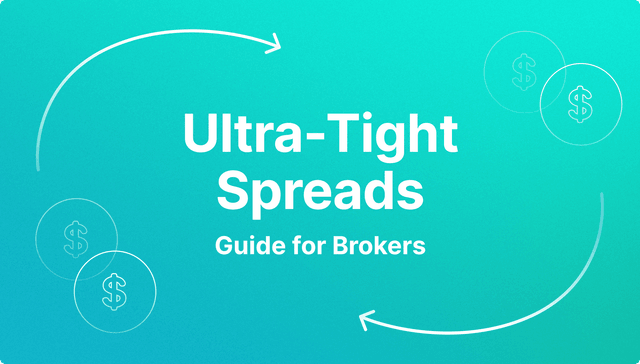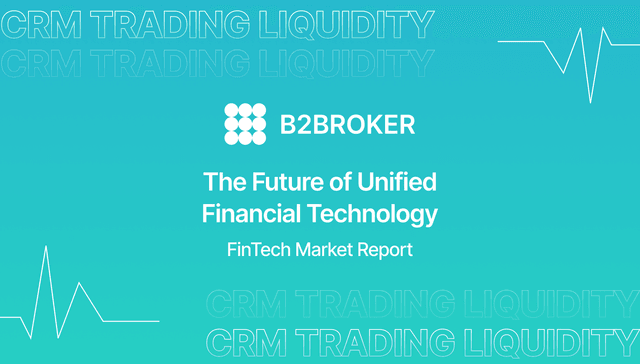What Are Indices, and How Do They Work?

Financial markets are constantly moving – prices go up, prices go down, and the overall pace can change in an instant, often faster than the news can report it. So, how do people make sense of this complex activity? One of the most common and powerful tools for getting a clear picture is the market index.
Powerful tools are needed that will reduce thousands of data points to one number. That number is a summary of how the market is doing. From Wall Street to Main Street, everybody uses the indices, which helps from the analysts to the everyday people.
The guide will inform you about indices, their calculation, and categories of indices.
Key Takeaways
Indices are very important in the market to benchmark the performance of different instruments such as stocks, bonds, commodities, and others.
The methods of calculation can be different: price-weighted, market-cap-weighted, equal-weighted
The roles of various indices differ, from global diversification to tracking of sector performance.
What Are Indices?
Imagine trying to understand the weather across an entire country just by checking the temperature in one city. It gives you a clue, perhaps, but hardly the full picture. Financial markets present a similar challenge – thousands of stocks, bonds, and commodities moving constantly. How can anyone grasp the overall trend? This is where market indices become incredibly useful.
Think of an index as a carefully curated summary statistic for a specific slice of the market. It takes a representative group of assets (its "constituents" – maybe large-company stocks, government bonds, or key commodities) and calculates a single value that reflects their collective performance.
It's designed to give you a quick, standardized read on whether that particular market segment is generally heading up, down, or sideways, cutting through the complexity of individual asset movements.

You constantly hear about indices like the S&P 500. Its prominence comes from tracking 500 of the largest U.S. companies, making it a widely accepted benchmark for the health of the American stock market overall. Performance is often judged against such benchmarks – did an investment portfolio "beat the S&P 500"? That's the question indices help answer.
However, the story an index tells depends heavily on how it's constructed. Does it give more weight to bigger companies (market-cap weighted, like the S&P 500)? Does the share price alone dictate influence (price-weighted)? Or is every company treated equally (equal-weighted)? These different methodologies shape the index's behavior and the insights it provides.
Beyond serving as vital comparison points, indices are integral to the mechanics of modern finance. They form the basis for many investment products, especially index funds and ETFs, which offer investors relatively simple ways to gain exposure matching a specific market segment's performance.
Moreover, analysts and economists rely on index trends as key indicators, helping them decipher economic patterns, gauge investor confidence, and track the relative strength of various industries.
The Dow Jones Industrial Average (DJIA) is one of the oldest and most-widely followed stock indices in the United States.
How Are Indices Calculated?
The way a market index translates the performance of many assets into one number depends entirely on its calculation methodology. These weighting schemes determine how much impact each component stock or asset has, and different approaches offer distinct perspectives on market performance.
Explore Deeper Industry Insights
Learn from experts shaping the future of financial services — get the latest strategies and trends.
Market Capitalisation-Weighted Indices (Cap-Weighted)
The most common approach today gives bigger companies a bigger voice. Market-cap weighting means a company's influence in the index is directly tied to its total market value (share price times number of outstanding shares). It's why giants within the S&P 500 or NASDAQ Composite hold significant sway.
This method is popular because it reflects the economic scale of companies, making it a natural fit for broad market benchmarks and the basis for many passive ETFs and index funds. The core idea is captured by calculating the index value based on the sum of market caps, adjusted by a divisor:

The main watch-out? Concentration risk – a few huge companies can end up driving much of the index's movement.
Free-Float Market Cap-Weighted Indices
A practical refinement to market-cap weighting addresses the fact that not all shares are available to public investors. Free-float adjustments, used by major providers like MSCI and FTSE, modify the weighting to count only those shares actively trading on the market, excluding large blocks held by insiders or governments. This offers a clearer view of the investable universe and actual market or indices liquidity.
Price-Weighted Indices
In sharp contrast stands price weighting, an older method where only the share price matters. This creates a potentially counter-intuitive situation where a high-priced stock significantly outweighs a lower-priced one, even if the latter represents a much larger business.

The well-known Dow Jones Industrial Average (DJIA) operates on this principle. Its value reflects the sum of its component prices, adjusted by a unique divisor that's meticulously updated to ensure the index's long history remains comparable despite stock splits or member changes. While simple, this method can create a potentially skewed market view based purely on share price levels.
Equal-Weighted Indices
Taking a completely different philosophical stance, equal-weighted indices apply a 'democratic' approach where small-cap constituents can have just as much impact as the giants. Consider the S&P 500 Equal Weight Index, where each firm, large or small, contributes an equal fraction to the whole. Such a structure naturally enhances diversification compared to market-cap methods, effectively giving smaller companies a louder voice.

However, this equality requires upkeep. Frequent rebalancing is necessary to reset the weights as market prices inevitably drift, which translates into higher operational considerations and potential costs for funds mirroring these indices.
Fundamentally Weighted Indices
Some indices ditch market price and capitalization altogether, opting for fundamental weighting. Here, the focus shifts to tangible measures of a company's underlying business strength or economic size, such as its revenue generation or cash flow, rather than its market valuation.

Strategies like the Research Affiliates Fundamental Index (RAFI) embody this concept, aiming to align the index with perceived intrinsic worth, potentially sidestepping market exuberance and targeting improved long-term, risk-adjusted performance. Calculating these indices often demands more extensive data, and their behavior might not closely mirror short-term market sentiment compared to conventional indices.
Types of Market Indices
Market indices are not monolithic; they are specialized instruments designed for different analytical and investment purposes. Selecting the appropriate index depends on what aspect of the market one needs to understand or track. Here’s a look at major index categories grouped by their primary function:
Stock Market Indices
Often, when market commentary refers to 'the market,' it points to major stock indices offering a broad health assessment. Consider the S&P 500: its market-cap weighted construction covering 500 large U.S. firms establishes it as a primary barometer for overall U.S. equity trends.
For a different, historical flavor focused on 30 established giants (and weighted by price), the Dow Jones Industrial Average offers another perspective.
Meanwhile, the tech-centric NASDAQ Composite provides insights into innovation and growth sectors. Key national benchmarks perform similar roles globally, including the UK's FTSE 100, Germany's DAX, and Japan's Nikkei 225, each offering a window into its respective domestic market.

Bond Indices
For tracking debt instruments and the conditions affecting them, fixed income indices are essential. For instance, the Bloomberg U.S. Aggregate Bond Index acts as a widely recognized yardstick for U.S. investment-grade debt. Other gauges track corporate bonds globally, such as the ICE BofA Global Corporate Index, or focus on government debt like the FTSE World Government Bond Index (WGBI).
These indicators help market participants analyze interest rate dynamics, assess credit environments, and evaluate the performance of income-focused investment strategies.
Commodity Indices
Commodity indices are designed to reflect price shifts in essential raw materials, from energy and metals to agricultural goods. Prominent benchmarks like the S&P GSCI and the Bloomberg Commodity Index (BCOM) aggregate these diverse inputs.
Since commodity price behavior often diverges from equities or bonds, these indices provide valuable perspectives on inflationary pressures and can serve as useful components in portfolio diversification efforts.
Sector and Industry Indices
Sometimes, a wide view isn't enough. For a more granular perspective, sector and industry indices permit focused examination of specific economic segments like healthcare, technology, or financials.
Examples include specialized gauges like the Nasdaq Biotechnology Index or the MSCI World Information Technology Index. They're popular for targeted "thematic" investing and for comparing how one industry is faring against the broader market backdrop.
Volatility Indices
Unique among indices, these don't track prices but rather market expectations of future choppiness.
Chief among these is the CBOE Volatility Index (VIX), which calculates expected near-term market fluctuations based on S&P 500 option pricing. Its tendency to climb during periods of heightened market stress earns it the 'fear gauge' nickname. Market professionals utilize it extensively for risk evaluation, hedging strategies, and anticipating or navigating market turbulence.

Global and Regional Indices
Benchmarks such as the MSCI World index (for developed nations) or the MSCI Emerging Markets index are fundamental references for tracking international stock performance.
Regionally focused indices also exist; within the Eurozone, for example, the EURO STOXX 50 follows leading blue-chip companies. For those individuals doing indices trading and aiming for global diversification or monitoring worldwide economic shifts, these indices are vital navigation aids.
Conclusion
Indices can appear as mere figures on a monitor or screen, but they narrate the market's and the economy's unfolding story with immediacy. They show who is winning and who is losing, who and what is trending, and they also serve as a guide for potential danger and opportunity, and for potential growth over the long term.
Interested in Partnering or Collaborating?
Over the past 10+ years, we’ve partnered with industry leaders to build solutions that set the standard in fintech. Now, we invite you to join us.
FAQ
- Can I invest directly in an index?
You might invest in index funds as well as ETFs that mimic the performance of a given index, not the index itself.
- How to trade indices?
Indices are commonly traded via financial derivatives such as futures, options, and CFDs.
- Why do indices use divisors in their calculations?
The index adjusts the divisors for stock splits and changes in components, and events that make the index comparable over time.
- Are indices only used for stocks?
Bond, commodity, sector, and volatility indices track diverse classes of assets.
Our team will present the solution, demonstrate demo-cases, and provide a commercial offer





